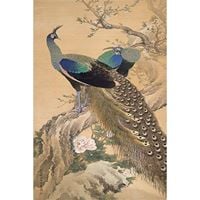Which country's cuisine includes the dish called "bibimbap"?
Bibimbap is a Korean dish. The word literally means "mixed rice". Bibimbap is served as a bowl of warm white rice topped with namul (sautéed and seasoned vegetables) and gochujang (chili pepper paste), soy sauce, or doenjang (a fermented soybean paste). A raw or fried egg and sliced meat (usually beef) are common additions. The hot dish is stirred together thoroughly just before eating. South Korea is especially famous for their versions of bibimbap. In 2011, it was listed at number 40 on the World's 50 most delicious foods readers' poll compiled by CNN Travel.
The name bibimbap was adopted in the early 20th century. This dish was traditionally eaten on the eve of the lunar new year as the people at that time felt that they had to get rid of all of the leftover side dishes before the new year. The solution to this problem was to put all of the leftovers in a bowl of rice and to mix them together.
Bibimbap ingredients are rich in symbolism. Black or dark colors represent North and the kidneys – for instance, shiitake mushrooms, bracken ferns or laver. Red or orange represents South and the heart, with chili, carrots, and jujube dates. Green represents East and the liver, with cucumber and spinach. White is West or the lungs, with foods such as bean sprouts,radish, and rice. And finally yellow represents the center, or stomach. Foods include pumpkin, potato or egg.
More Info:
en.m.wikipedia.org








